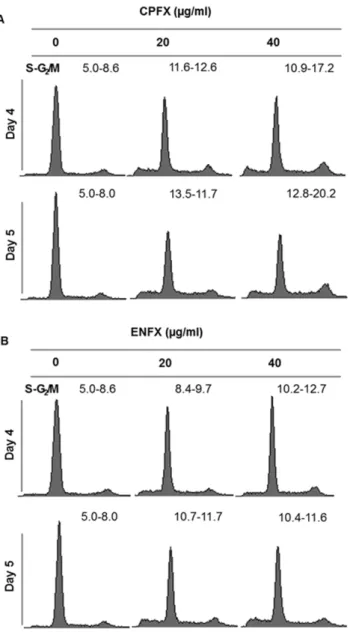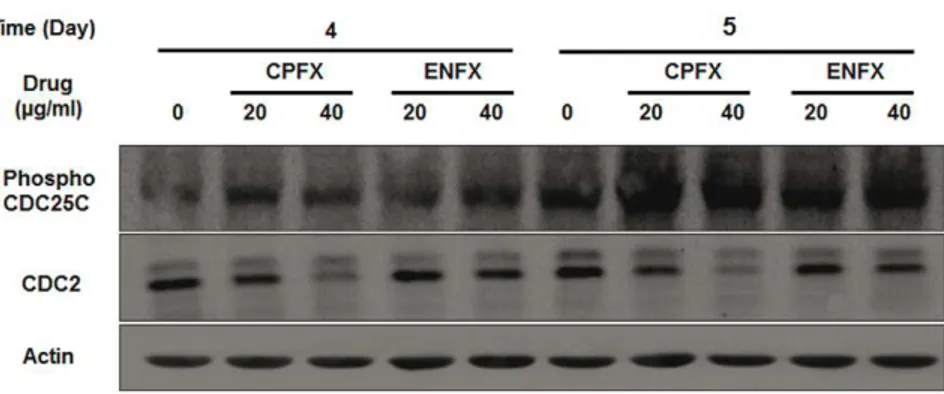Fluoroquinolone-mediated inhibition of cell growth, S-G2/M cell cycle arrest, and apoptosis in canine osteosarcoma cell lines.
Texto
Imagem


Documentos relacionados
Analysis and discrimination of necrosis and apoptosis (programmed cell death) by multiparameter flow cytometry.. Novel approach for simultaneous evaluation of cell phenotype,
So, does this mean that if we block the activity of caspases we will prevent every sign of apoptosis and therefore keep the cells alive? The answer is yes in two situations: a)
STAT3 targeting shRNA can remarkably silence the expression of the gene STAT3 in HT-29 cells, resulting in inhibition of cell growth and cell cycle arrest at the G 0 /G 1 phase.
In our study, anandamide inhibited the proliferation of gastric cancer cells and mediated G2/M cell cycle arrest by altering the expression of the cell cycle regulators. This
To further clarify the underlying mechanism by which 2-ME induced G2/M cell cycle arrest in human UC cells, we analyzed the level of cell cycle regulatory proteins, including
The suppression of cancer cell growth has been known to be primarily mediated by apoptosis and cell cycle arrest. We next applied flow cytometry to analyze cell cycle phase
The synthesis and secre- tion of heparan sulfate proteoglycan by these cells is down-regulated during the S phase in relation to the G 1 and G 2 + M phases of the cell cycle,
Caesalpinioflavone reduced cell viability of tumor cell lines A549, MCF7, Hst578T and HTC, as consequence of cell cycle arrest in G1/S transition (A549 and MCF7) and